The Drone Industry Action Group met on the following dates and the minutes and presentations are available. If you have any questions, please get in touch via [email protected]
26 April 2022
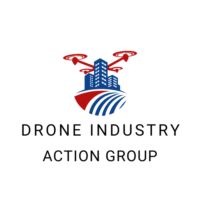
The Drone Industry Action Group met on the following dates and the minutes and presentations are available. If you have any questions, please get in touch via [email protected]
26 April 2022

by ARPAS-UK, in conjunction with Connected Places Catapult
Learn about the practicalities of drone operations and how sensor-based drones can provide benefits to your project
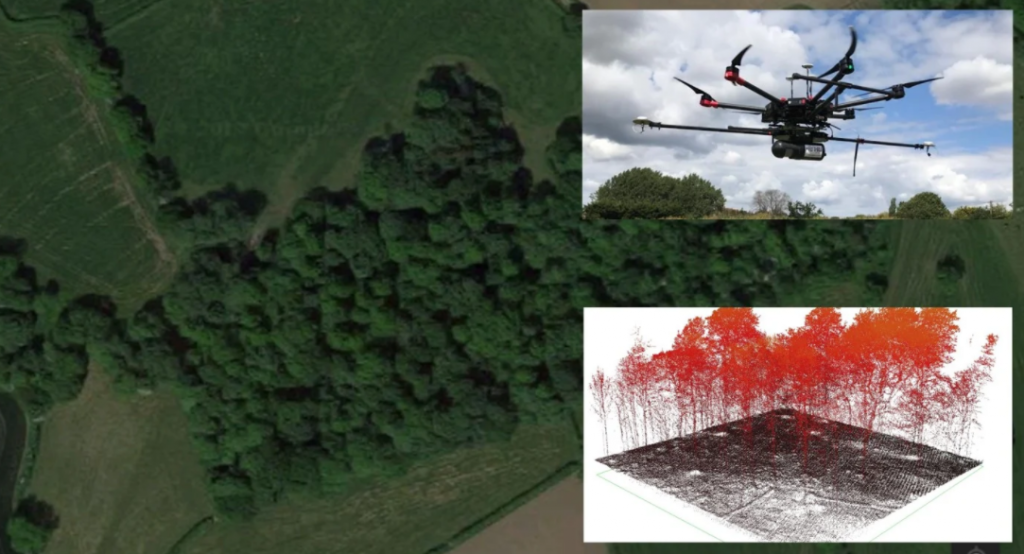
Surveyors, engineers and built environment professionals are faced with a growing portfolio of advanced technology, including drone-enabled sensors. In this online CPD learning session, Michael May, Operation Director at Flythru, will provide an overview of current legislation and what is required in order to bring drones to a project. Michael will also discuss how working practices can be adapted to make it easier to use drones on site, what the challenges and opportunities are for drone-use.
Key Learnings
About the Speaker
An experienced entrepreneur and qualified pilot, Michael May is a director of Flythru, a company offering 3D mapping, thermal imagery and lidar; providing aerial data in a cost effective and safe fashion.
Professional development series brought to industry by ARPAS-UK, the drone industry trade association and Connected Places Catapult, who provide impartial ‘innovation as a service’ for public bodies, businesses, and infrastructure providers.

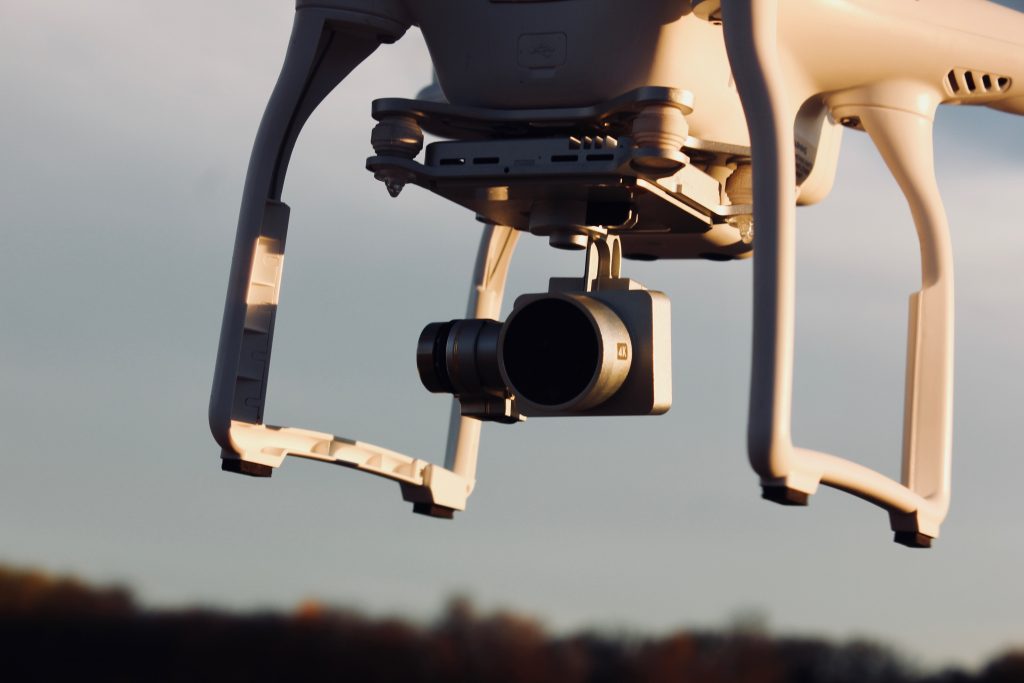
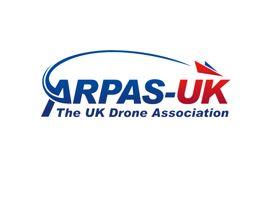

The Drone Industry Action Group met on the following dates and the minutes and presentations are available. If you have any questions, please get in touch via [email protected]
15 January 2020
28 April 2020
13 October 2020
21 January 2021
27 April 2021
19 October 2021
14 December 2021

Following a formal 24 month Airspace Change Proposal process ARPAS-UK Member Snowdonia Aerospace Centre (SAC) is pleased to announce that Civil Aviation Authority (CAA) approval has been granted for the establishment of the UKs first commercial and privately controlled Danger Area in support of the research and development of novel aerospace systems.
The new Danger Area provides an area of segregated airspace immediately around Llanbedr Airfield for testing of future air vehicles, including Beyond Visual Line of Sight (BVLOS) Drones and Electric Air Mobility Vehicles, together with an air corridor to link the Airfield to the existing adjacent MOD Danger Area D201 in Cardigan Bay to enable further extended range, altitude and endurance testing including potentially a number of near space operations.
The new Danger Area extends to 420km2 with the option of then using the adjacent MOD Danger Area which extends to a further 7000+km2
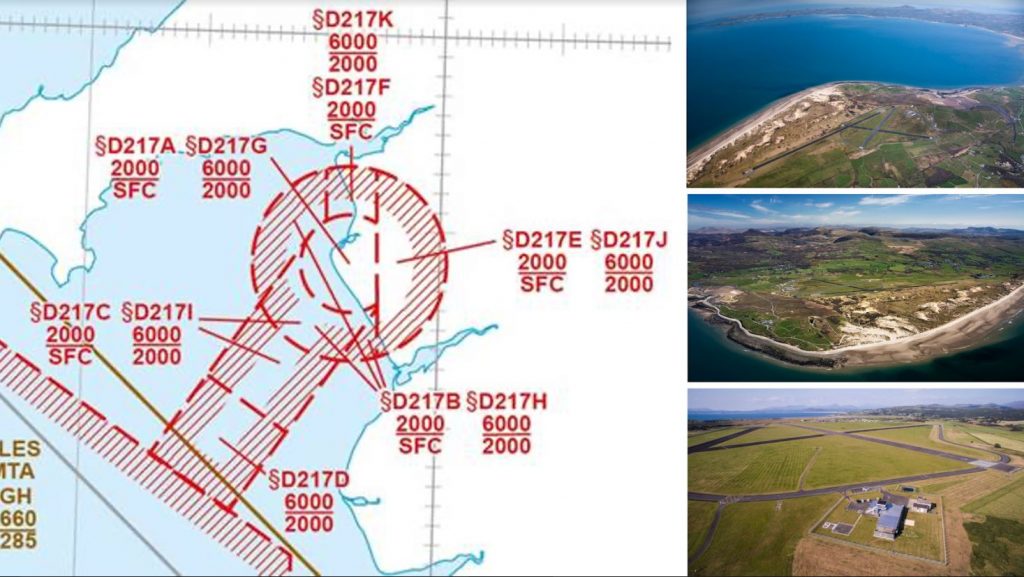
SAC began the process in July 2019 with an initial Statement of Need being issued to the CAA to support their Proposal. Prior to this SAC had operated under a number of Temporary Danger Areas (TDA) when customers were looking to test their experimental air vehicles at the Airfield. With an increasing customer base and demand for the facilities it was becoming no longer commercially viable for SAC to continue to operate under this basis. A more permanent solution was required. The new Danger Area became live from the 09 September 2021, some 2 years post the process starting, and will be activated by NOTAM as and when required.
The Welsh Government provided financial support to SAC to assist with a proportion of the costs of the 2 year project.
Economy Minister Vaughan Gething said: “The Welsh Government is committed to supporting the continued growth of the aerospace and space sectors in Wales and I am delighted we have been able to assist in bringing this exciting and ambitious project to reality. As a UK first this scheme further enhances the unique physical and business environment Wales offers companies in the industry. The testing and evaluation capabilities available will make Llanbedr Airfield even more attractive to companies in the field. It also confirms its status as the Centre of Excellence for pioneering and innovative aerospace research and development in the UK.”
As part of the CAA’s formal CAP1616 process Snowdonia Aerospace had to follow and pass a number of set Stages including developing acceptable Design Principles, Design Options, Environmental and Noise assessments and a full public consultation from which 140 responses were received. The CAA were satisfied that the efficient use of airspace will not be compromised and the proposal would limit any impact to other aircraft users. The CAA were also satisfied that the new designated Airspace would have no discernible adverse environmental impact and all relevant environmental factors have been considered in line with government policy.
Jeremy Howitt, Future Flight lead at Snowdonia Aerospace said “The positive decision by the CAA illustrates their commitment to support the development of innovation across the aerospace sector in line with the UK Airspace Modernisation Strategy. The Llanbedr Danger Area provides an unrivalled operational test environment for customers looking to accelerate the development of their drones, urban air mobility vehicles and other novel aerospace systems and will also be a key element in Snowdonia Aerospace’s own flight testing under the UK Research & Innovation Future Flight Challenge as we seek to develop BVLOS drone services to support communities across Wales.”
SAC have been appointed the designated Danger Area Authority (DAA) and they are the first and currently only commercial DAA in the UK as all other existing Danger Areas around the UK have the MOD as the DAA. Within all MOD controlled Danger Areas MOD operations must take priority of use over any commercial activity. The new permanent Danger Area at Llanbedr Airfield has been developed to serve the needs of commercial operators who remain frustrated by the lack of suitable and viable testing facilities in the UK and is designed to encourage the commercial exploitation and growth of the future of aviation.
As part of the approval the CAA also created a first and new descriptive activity of operations permitted within the Danger Area. The new permanent Restricted Airspace at Llanbedr will not only allow the testing and operation in segregated airspace of unmanned air systems (drones) and balloons (including airships) but will also now allow the new activity of Test & Evaluation (T & E) operations to take place. T & E has been defined as single or multiple aircraft conducting manoeuvres that may not be able to comply with the Rules of the Air and has been developed to cater for the development and testing of amongst others, electric air vehicles.
Lee Paul, Partner and CEO of SAC stated “ We are delighted after over 2 years work and significant further investment that we have secured a UK first. The development of the new permanent Airspace will significantly enhance the UK RD & TE capability in environmentally friendly aircraft and electric technologies and will enable UK businesses to retain future flight test programmes in the UK rather than the operating abroad thereby retaining economic activity and jobs in the UK economy.
Lee Paul further added “The award of the new Danger Area will now enable us to continue with the ongoing planned further investment at the Airfield and reinforce the Airfield as the UK’s Centre of Excellence for novel aerospace research and development. We are shortly to be announcing new employment and training opportunities for Operations Assistants and Flight Information Officers which we are aiming to recruit from the local area.
We are receiving an increasing number of enquiries from companies looking to take advantage of the new “testing environment” and our first customer is planned for later this month. This is also a significant step in the development of Spaceport Snowdonia and we believe we are the first proposed Spaceport in the UK which has now secured its required Airspace need to support future spaceport operations.”
John Whalley CEO of Aerospace Wales and co-chair of the Space Wales Leadership Group said “This is a huge step forward for Snowdonia Aerospace Centre/Spaceport Snowdonia, underpinning its role as a key UK asset for the development of disruptive flight technology, spaceflight and new applications to support the community and key sectors of the economy. Congratulations to the whole team.”
Further details and booking of the new Airspace can be made by contacting [email protected]
28 September 2021

In this 90-minute webinar, you can hear about the new drone regulations introduced at the end of 2020, and what else is coming. This session will provide the drone community with a comprehensive update on the significant changes in regulations that apply to their operations.
The focus will be the commercial sector, although, from a regulations point of view, the current distinction between commercial and recreational use of drones is no longer so relevant.
The details of the changes will be provided by Gerry Corbett of the UK CAA, who will also be available to answer your questions live.
Further updates will be given by ARPAS-UK.
We thank Coptrz for their generous support in hosting this session for us.
To register, follow the link.

LONDON, 22 March 2021: The Home Office, Police and UK Civil Aviation Authority (CAA) today announce a new campaign aimed at clamping down on drone-related crimes, after 336 drone-related incidents were recorded during the last five months in the UK.
The new campaign, Operation Foreverwing, will see the three organisations work together to show the work the Police is doing around tackling drone crime, in a bid to deter drone owners from breaking the rules.
The Police has dedicated drone teams located across the country, tasked with enforcing the law by handing out fines and confiscating drones if people fail to stick to the rules. With the CAA setting the rules for drone flying, the campaign will raise awareness of the rules while reminding those tempted to break them of the consequences.
National Police Chiefs’ Council lead for counter Drones, Chief Constable Lucy D’Orsi, said:
“The use of drones has increased dramatically in recent years and as a result of that we are seeing instances of dangerous and irresponsible flying.
“If you are a drone owner it is your responsibility to make sure you are following the rules for your own safety and that of others around you.
“These rules can be found in the Drone Code on the CAA website.”
UK law now dictates that CAA registration is mandatory for operators of drones over 250 grams and all drones other than toys that are fitted with a camera. Failure to register leaves drone users at risk of penalties up to £1,000.
The campaign will see more cooperation between the bodies and joint education targeting drone users.
Jonathan Nicholson, Assistant Director of Communications, CAA, said:
“With close to 200,000 registered drone owners across the UK, the skies are becoming increasingly busy. Our objective is not to stop people having fun or using their drone for business, it’s to make sure that everyone can share the air safely and that means sticking to the rules outlined in the Drone Code.
“Drones can cost thousands of pounds, and with fines for breaking the rules, the costs can quickly add up for those failing to comply.”
For more information on UK drone regulations, registration and the Drone Code please visit www.caa.co.uk/drones
22 March 2021

| Background: In July 2019 there was an incident involving an Alauda Airspeeder MKII unmanned aircraft at Goodwood Aerodrome, West Sussex, during a demonstration flight. There were no fatalities or injuries, and the unmanned aircraft was destroyed. The Air Accidents Investigation Branch (AAIB) investigated the accident, and the report can be found on the AAIB website. The CAA is required to formally respond to the AAIB within 70 days. |
CAA UAS Unit action: The CAA UAS Unit has been and will continue to be committed to continuously improve as the UAS regulator. The Unit has already initiated several workstreams to address the safety recommendations in the report and significant progress has been made. The audit process had been reviewed and updated prior to this report, to ensure that there is suitable and appropriate oversight carried out. The team are finalising processes that will trigger additional on-site oversight based on the complexity of an operation or platform. There has been an upskilling within the team and recruitment of staff into the UAS Sector Team with specific operational and technical background in airworthiness and avionics, along with a policy to ensure the involvement of other capability areas is implemented where necessary. We will: – Review application and authorisation processes for Specific category operations. – Review oversight and audit processes. – Review staff training and competency requirements. – Review policy relating to Specific category operations. – Review guidance in CAPs such as 722 and 722A. We will keep our key stakeholder forum and representative organisations updated on progress. |
CAA
4 March 2021